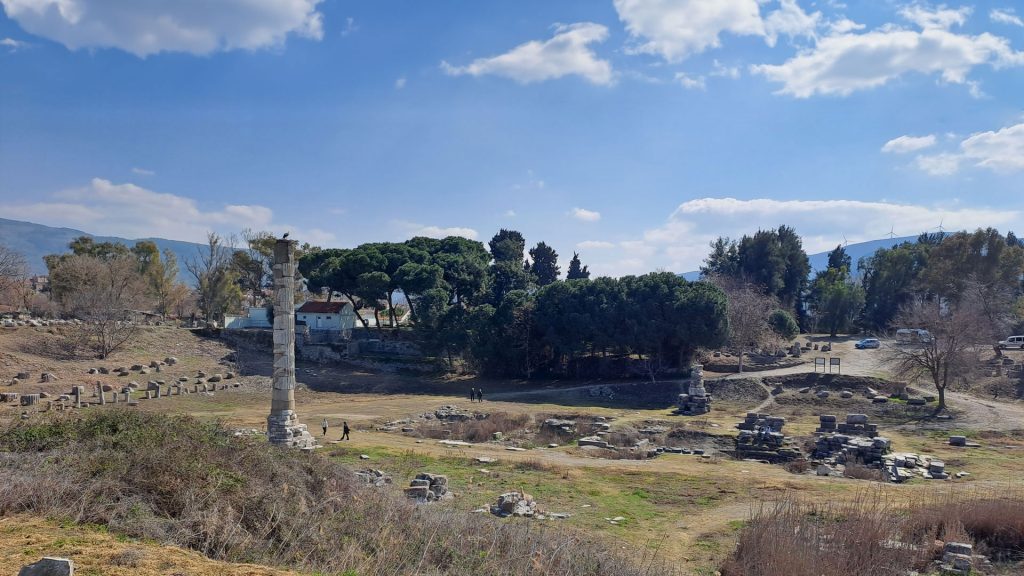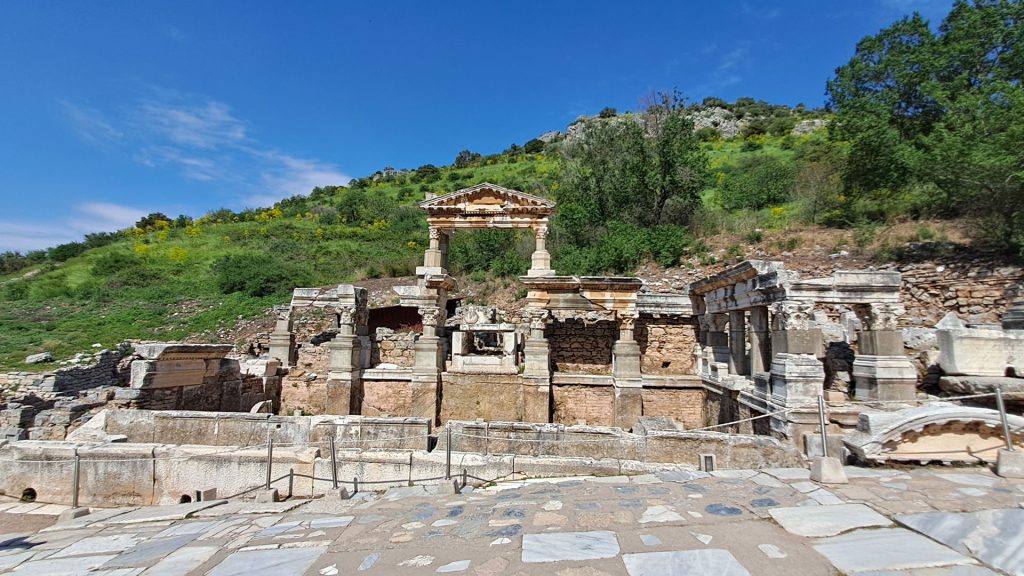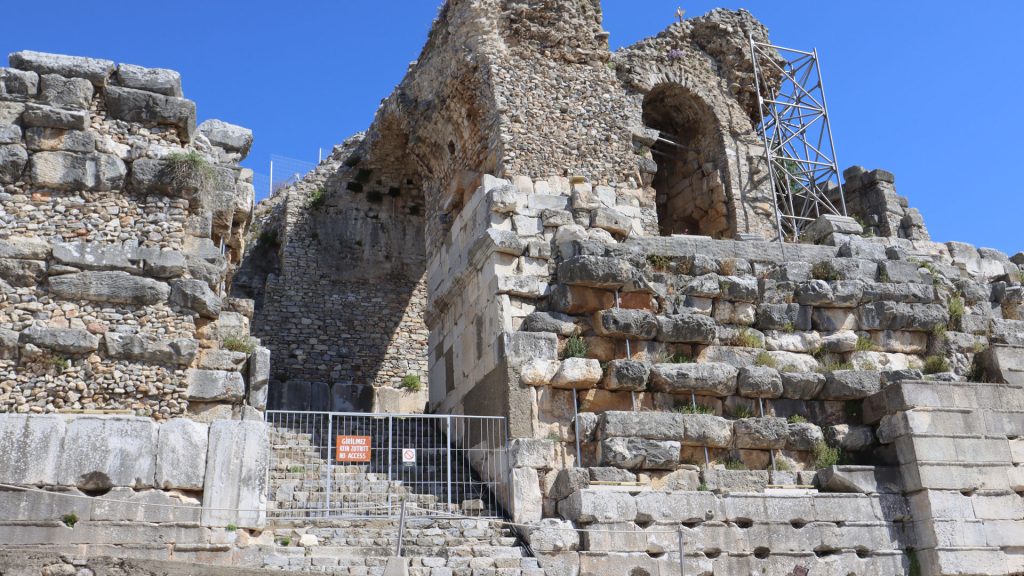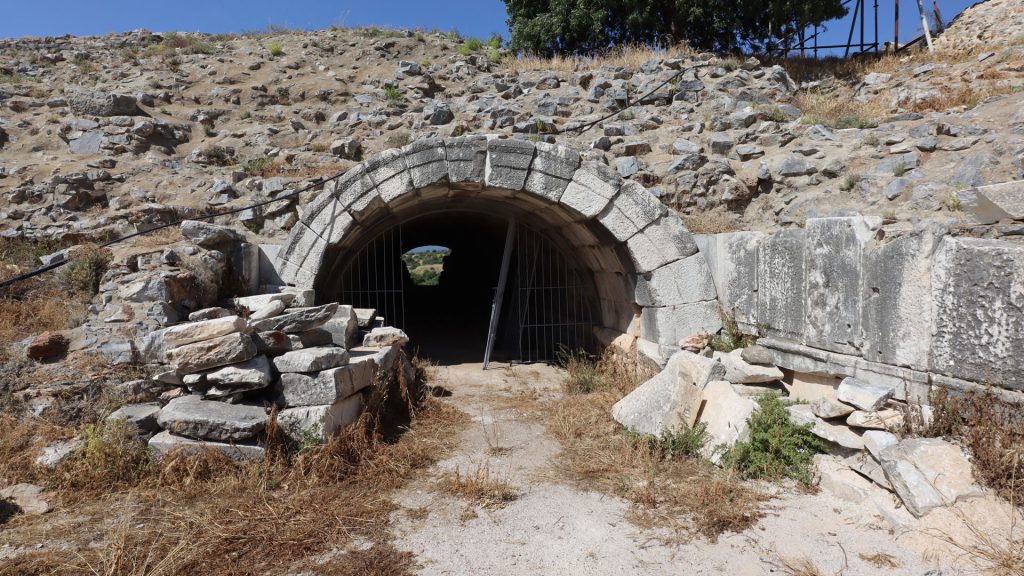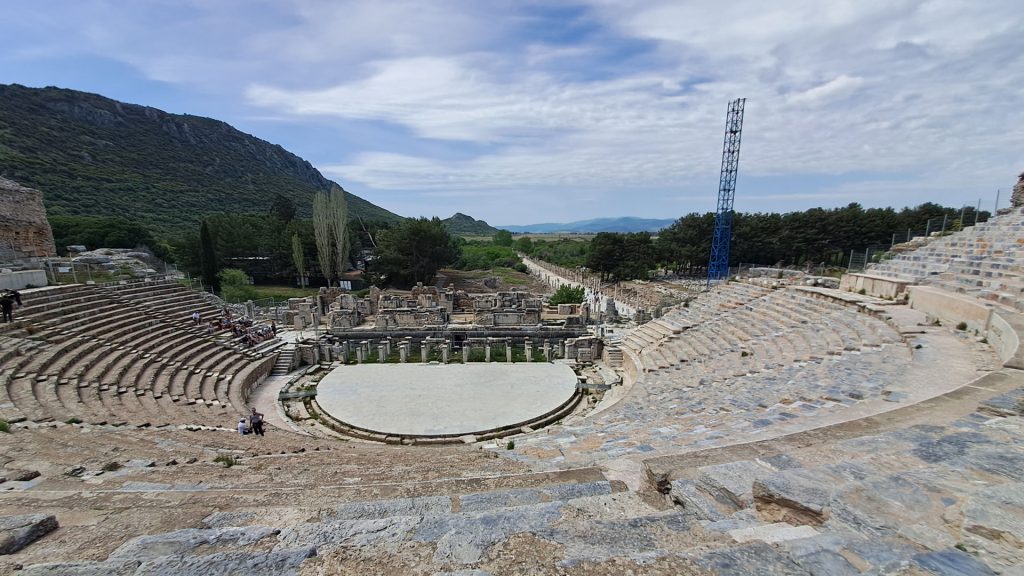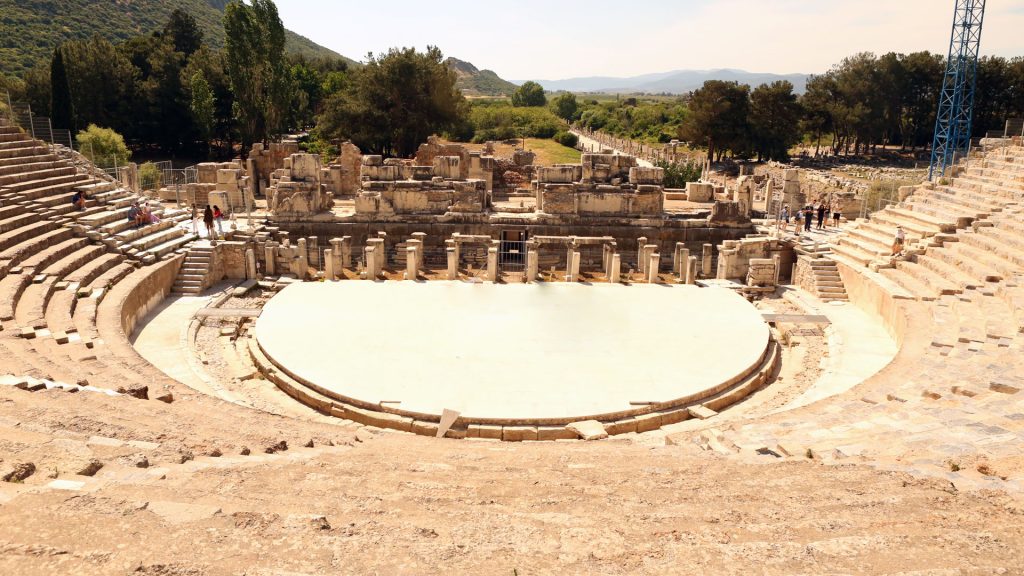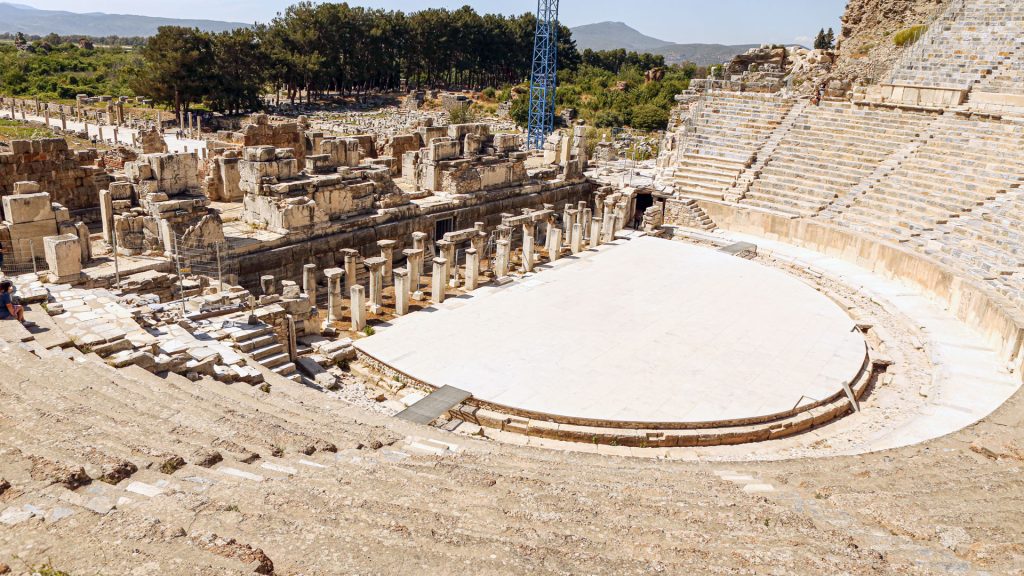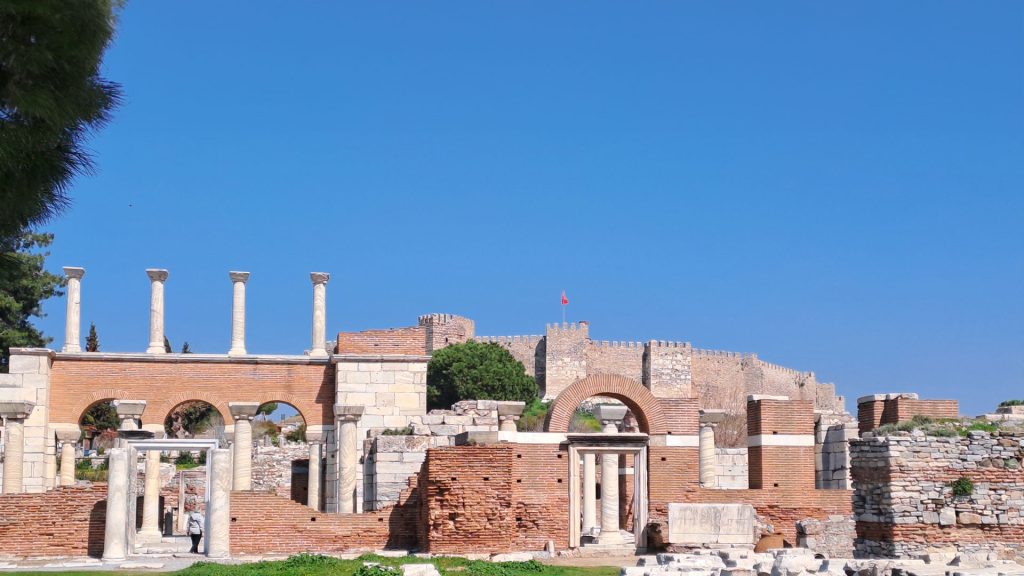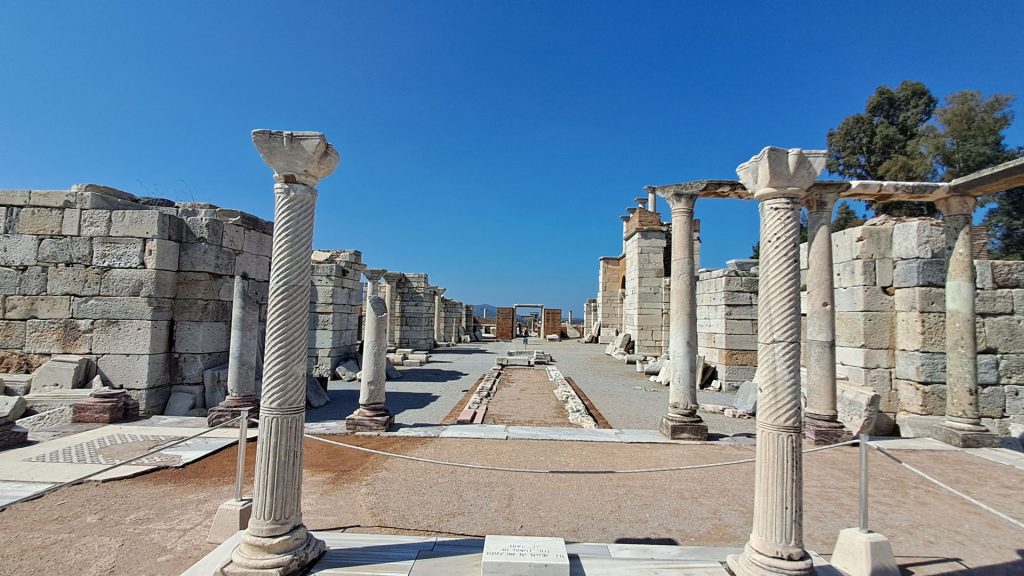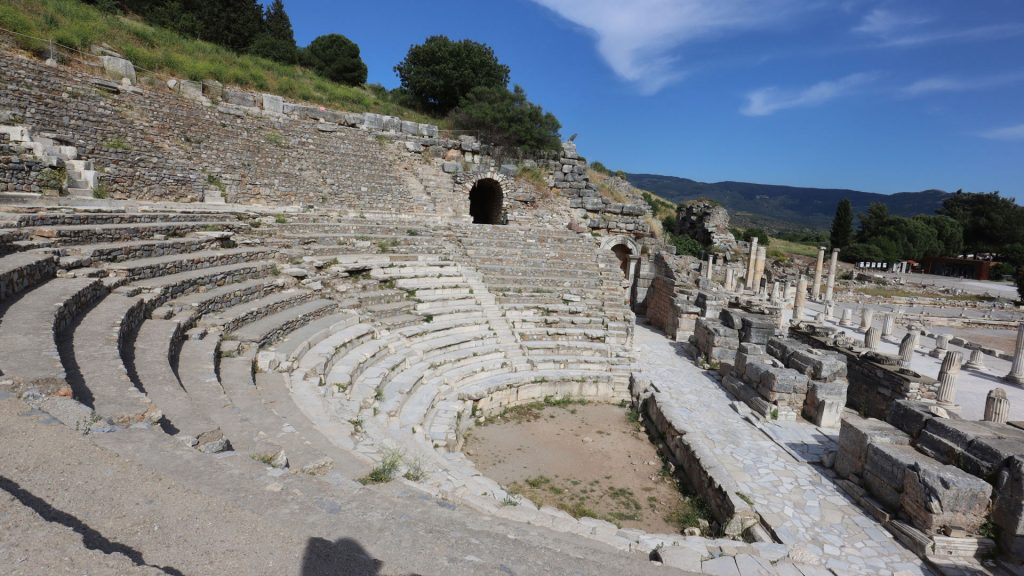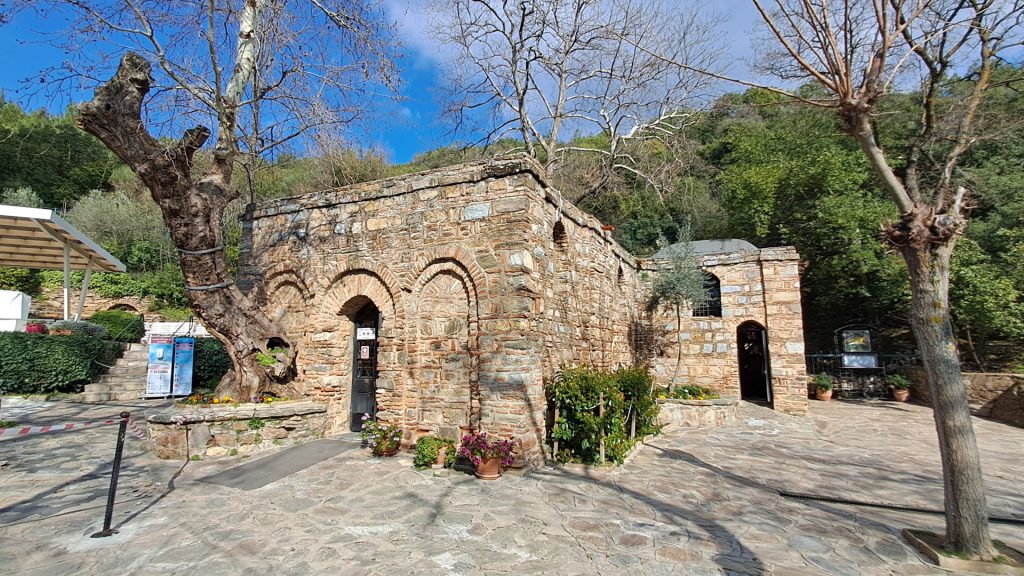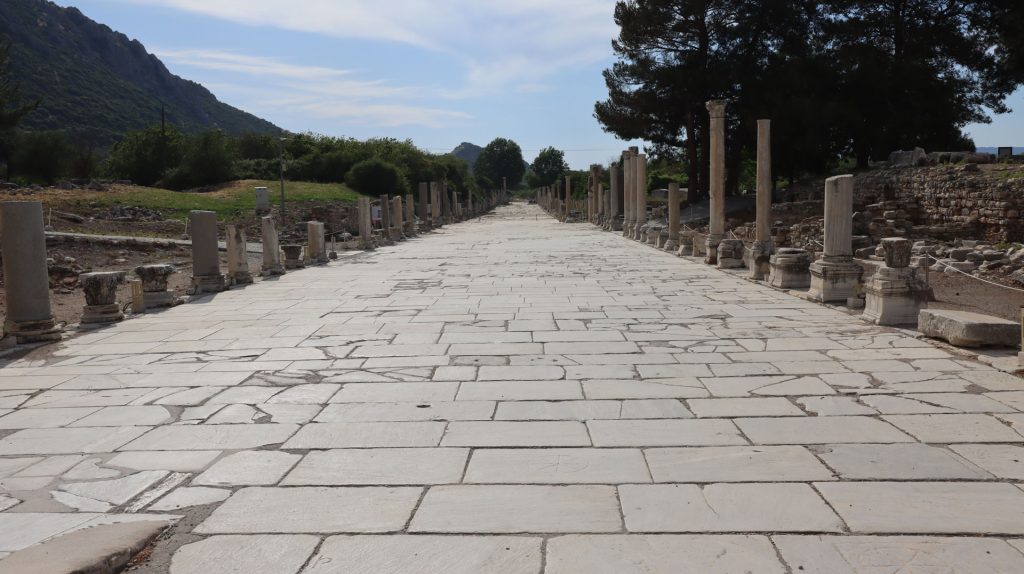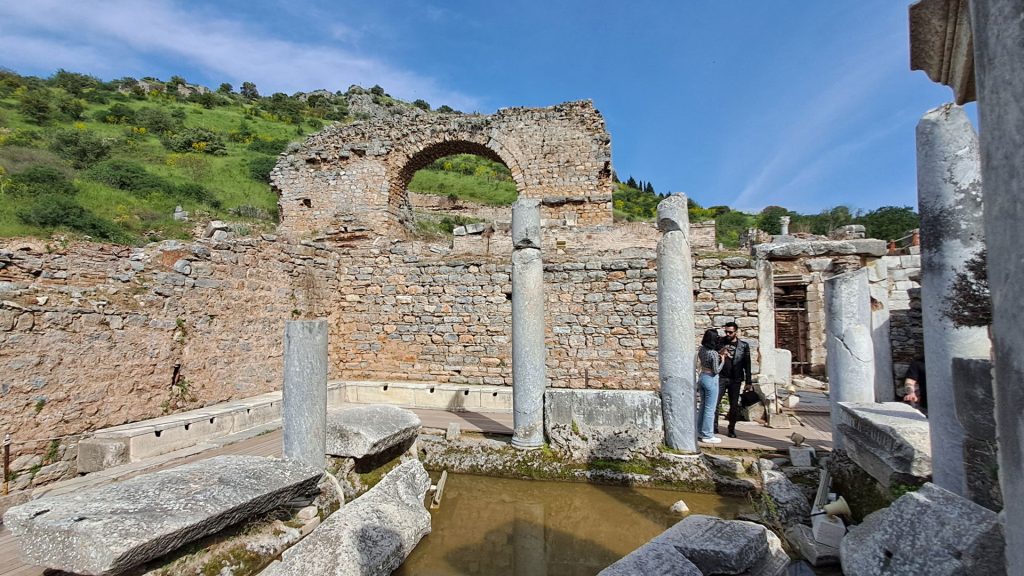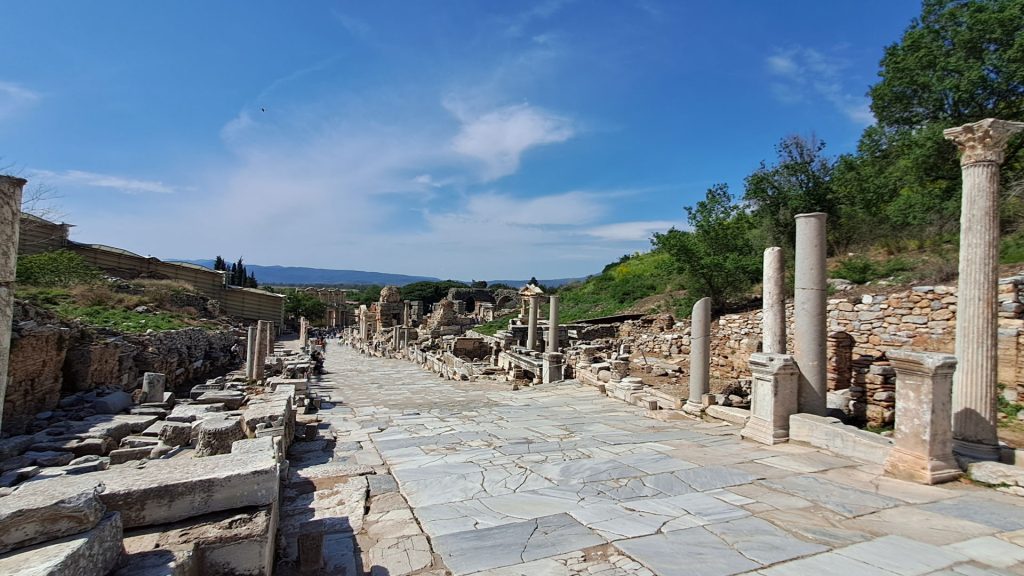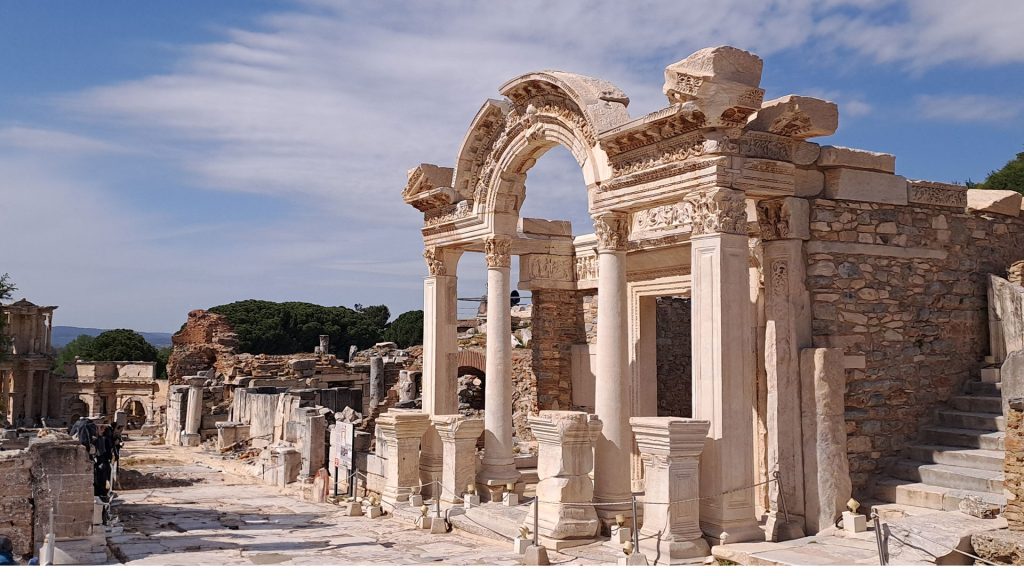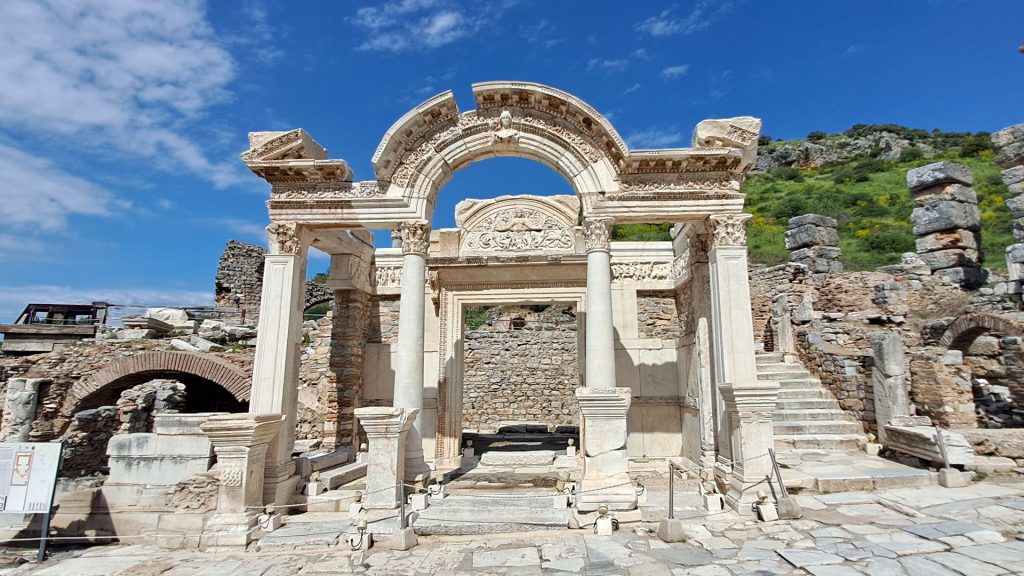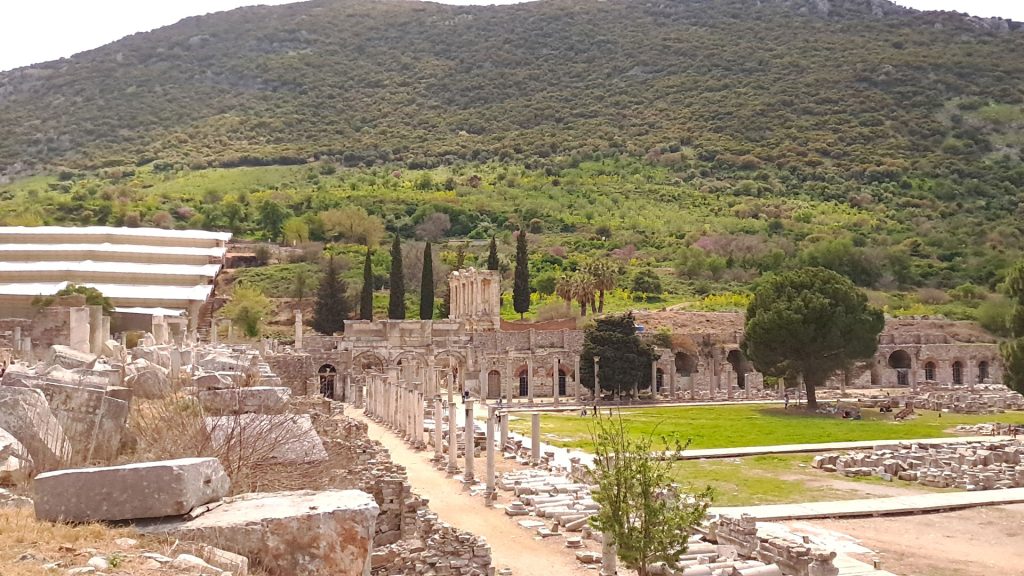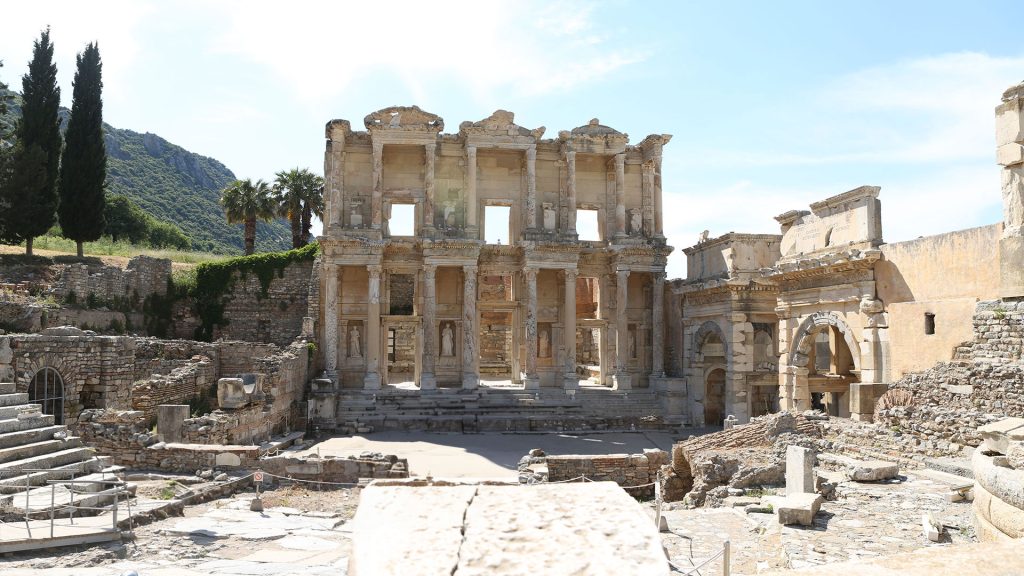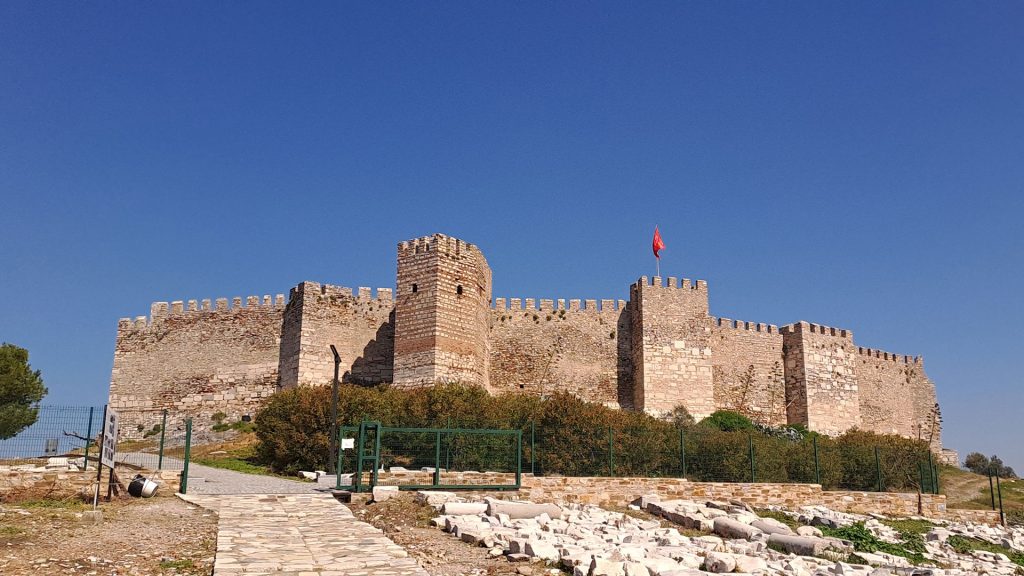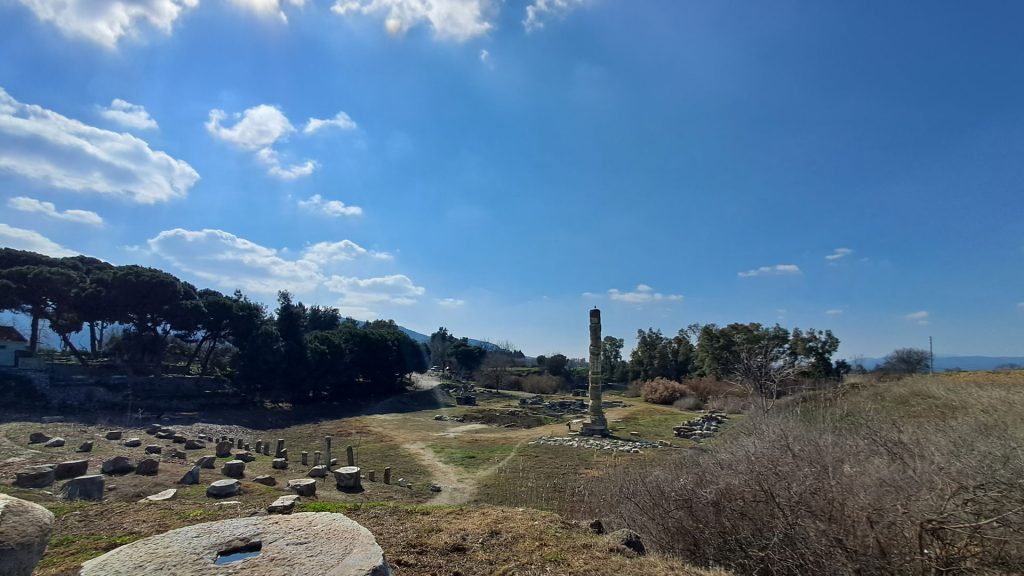In the 10th century, in Ephesus, one of the 12 Ionian cities in Anatolia, a continuous and complex settlement history can be traced from the Çukuriçi Mound in the 7th millennium BC, starting from the basin of the Kayster River, which was once the basin of the Selçuk River, to the present day. Despite its geographically favorable location, Ephesus has been subjected to the continuous east-to-west movement of the coastline due to sedimentation, causing the city area and ports to change location many times. When the Neolithic settlement in Çukuriçi Mound, which formed the southern edge of the ancient harbor, remained quite inland, it was abandoned from the Middle Bronze Age onwards, and settlement shifted to the Ayasuluk Hill. The Artemis Sacred Area, established in the 2nd millennium BC, became one of the largest and most powerful sacred areas of the ancient world.
It is known that there was a Mycenaean settlement in the region in the 14th century BC, and in the 1200s BC, sea peoples migrated to the region. It is thought that the Ionian Ephesus was founded by Androclus, the son of King Codrus of Athens, in the place indicated by an oracle. After the siege by King Croesus of Lydia, Ephesus joined the Attic-Delos maritime alliance, came under Persian rule in 386 BC, and regained its freedom as a result of Alexander the Great’s struggle against the Persians. In 300 BC, Lysimachus, one of Alexander’s generals, wanted to build a modern city in the Hellenistic style and created a city surrounded by walls, still visible today on the north slopes of Mount Bulbul, with grid-plan streets according to the urban planning principles of Hippodamus. In 133 BC, with the bequeathal of the Kingdom of Pergamon to Rome, the city became part of the Roman Empire’s province of Asia, the center of the Ionian region, the second capital of the Roman Empire, and the residence of Emperor Augustus.
During this period, structures were expanded and redesigned (renovated), and more elegant buildings such as the Temple of Hadrian and the Library of Celsus were built. Ephesus’s decline coincides with the Byzantine period. During this period, new defense walls including the Panayır Dağı peak and several buildings including the Virgin Mary Church were built, enclosing the harbor and the Byzantine city. On the eastern slope of Panayır Dağı lies the Necropolis area, and there are also structures dating back to the Christian period, such as the Seven Sleepers. The arrival of the apostles and Virgin Mary to Ephesus in the 6th century AD facilitated the rapid spread of Christianity in the region. Ephesus, which moved away from the coast throughout history due to the alluvium brought by the Küçük Menderes River (ancient Kayster River), completely moved away from the coast in the Middle Ages, and the new port became Kuşadası (Scalanuova) built by the Genoese, while the Ephesians settled around the Ayasuluk Hill. After the Early Ottoman Period, Ephesus was completely abandoned.
